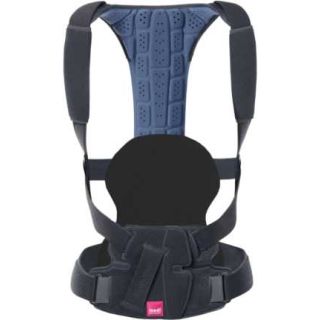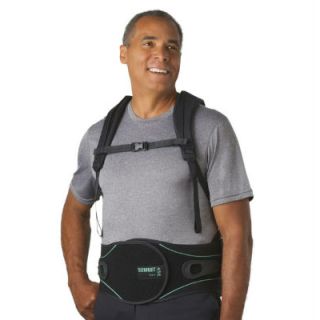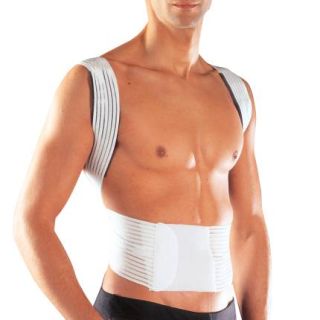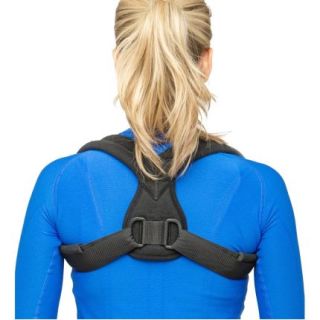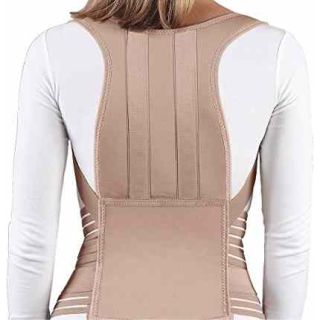Comprehensive Guide to Back Braces for Posture: Understanding Posture Braces and Posture Back Braces
In today’s fast-paced, technology-driven world, poor posture has become an increasingly common issue. Whether it’s slouching over a laptop, hunching while texting, or sitting for prolonged periods, many people unknowingly compromise their spinal health. This has led to a growing interest in tools like back braces for posture, posture braces, and posture back braces—devices designed to support the spine, encourage proper alignment, and alleviate discomfort.
What Are Back Braces for Posture?
A back brace for posture, often interchangeably called a posture brace or posture back brace, is a wearable device designed to support the upper back, shoulders, and spine. Its primary goal is to promote proper alignment of the body, counteracting the tendency to slouch or hunch forward. These braces typically consist of straps, rigid or semi-rigid supports, and sometimes padding, which work together to gently pull the shoulders back and align the spine into a more natural position.
Posture braces come in various designs, from simple elastic bands to more complex systems with adjustable straps and lumbar support. They are worn over or under clothing and are often lightweight and discreet, making them suitable for daily use at work, home, or even during exercise. While they are not a cure for underlying spinal conditions, they serve as a helpful tool for retraining the body to maintain better posture over time.
How Do Posture Braces Work?
The mechanism behind a posture back brace is relatively straightforward yet effective. Most designs focus on the upper back and shoulders, areas prone to slumping due to prolonged sitting or repetitive movements. By applying gentle tension to the shoulders, the brace encourages them to retract, opening up the chest and aligning the spine into its natural “S” curve. This counteracts the forward tilt of the head and shoulders that often occurs during activities like typing or driving.
Some posture braces also include lumbar support to stabilize the lower back, ensuring a holistic approach to spinal alignment. The constant, subtle reminder provided by the brace helps train muscle memory. Over time, with consistent use, the wearer may naturally adopt better posture even when not wearing the device. However, the effectiveness depends on factors like the brace’s design, how well it fits, and the wearer’s commitment to using it correctly.
Benefits of Using a Back Brace for Posture
The advantages of incorporating a posture brace into your routine are numerous, particularly for those who struggle with slouching or experience posture-related discomfort. Here are some key benefits:
- Improved Posture: The most obvious benefit is enhanced alignment. By gently pulling the shoulders back, a posture back brace helps combat the rounded shoulders and forward head position that develop from poor habits.
- Pain Relief: Poor posture often leads to muscle strain, tension headaches, and back or neck pain. A well-designed brace can alleviate these symptoms by redistributing pressure and reducing stress on overworked muscles and joints.
- Increased Confidence: Standing tall with proper posture not only looks better but also boosts self-esteem. Many users report feeling more confident and assertive when their posture improves.
- Prevention of Long-Term Issues: Chronic poor posture can contribute to conditions like kyphosis (a hunchback appearance) or degenerative spinal problems. Using a posture brace as a preventive measure may reduce the risk of these issues developing over time.
- Enhanced Breathing and Circulation: Slouching compresses the chest and diaphragm, limiting lung capacity. Correcting posture with a brace allows for deeper breathing and better oxygen flow, which can improve energy levels and overall health.
- Versatility: Posture braces are suitable for a wide range of people—office workers, students, athletes, or anyone looking to improve their spinal health. They can be worn discreetly under clothing, making them practical for everyday use.
Potential Drawbacks and Limitations
While posture braces offer significant benefits, they are not without limitations. It’s important to understand these potential downsides to make an informed decision:
- Dependency Risk: Over-relying on a back brace for posture can weaken the muscles responsible for maintaining alignment. If used excessively without complementary exercises, the body may become dependent on the brace rather than strengthening its natural support system.
- Discomfort: Some users find posture braces uncomfortable, especially during the initial adjustment period. Tight straps or rigid components may cause irritation or restrict movement if not properly fitted.
- Not a Cure-All: A posture brace won’t fix underlying medical conditions like scoliosis or severe spinal deformities. It’s a supportive tool, not a substitute for professional medical treatment or physical therapy.
- Fit and Sizing Issues: A poorly fitted brace can be ineffective or even exacerbate posture problems. Finding the right size and adjusting it correctly is crucial for optimal results.
- Temporary Solution: For lasting posture improvement, a brace should be paired with lifestyle changes, such as regular exercise and ergonomic adjustments to workspaces.
Who Should Use a Posture Brace?
Posture back braces are ideal for individuals who notice mild to moderate posture issues or experience discomfort from slouching. This includes:
- Office Workers: Those who sit at desks for long hours are prime candidates, as sedentary work often leads to forward head posture and rounded shoulders.
- Students: Carrying heavy backpacks and studying for extended periods can strain young spines, making a brace a helpful aid.
- Athletes: Certain sports or repetitive movements can lead to imbalances that a posture brace can help correct during recovery or downtime.
- Seniors: Aging can weaken posture-supporting muscles, and a brace can provide extra stability.
However, individuals with chronic pain, severe spinal conditions, or injuries should consult a healthcare professional before using a posture brace, as it may not be suitable for their needs.
Choosing the Right Back Brace for Posture
With so many options on the market, selecting the right posture brace can feel overwhelming. Here are some factors to consider:
- Design and Features: Look for a brace that targets your specific needs—whether it’s upper back support, lumbar reinforcement, or both. Adjustable straps and breathable materials enhance comfort and functionality.
- Fit and Comfort: Ensure the brace fits snugly but not too tightly. Most brands offer sizing charts based on chest or waist measurements—follow these carefully.
- Ease of Use: A brace should be simple to put on and take off, especially if you plan to wear it daily. Some models even allow for adjustments while being worn.
- Durability: High-quality materials like neoprene or reinforced stitching ensure the brace lasts through regular use.
- Reviews and Recommendations: Visit our product pages and review user feedback to gauge effectiveness and comfort. DME-Direct’s brace professionals and physical therapists can also help recommend one of our braces.
Tips for Using a Posture Brace Effectively
To maximize the benefits of a back brace for posture, follow these practical tips:
- Start Gradually: Wear the brace for 20-30 minutes at a time initially, increasing duration as your body adjusts.
- Pair with Exercise: Strengthen your core and back muscles with exercises like planks, yoga, or stretches to complement the brace’s effects.
- Maintain Awareness: Use the brace as a reminder to sit or stand tall, but don’t rely on it exclusively.
- Adjust Your Environment: Optimize your workspace with an ergonomic chair, monitor height, and keyboard placement to support good posture naturally.
Conclusion
Back braces for posture, posture braces, and posture back braces are valuable tools in the quest for better spinal health and alignment. They offer a practical, non-invasive way to combat slouching, reduce discomfort, and boost confidence. However, they work best when used thoughtfully—combined with exercise, ergonomic adjustments, and an awareness of daily habits. By choosing the right brace and using it effectively, you can take meaningful steps toward a healthier, more upright you. Whether you’re an office worker, student, or simply someone looking to stand a little taller, a posture brace might just be the support you need to transform your posture and your life.
 Details$359.99 $319.99
Details$359.99 $319.99 Details$32.99 $23.99
Details$32.99 $23.99 Details$98.99 $89.99
Details$98.99 $89.99 Details$389.99 $369.99
Details$389.99 $369.99 Details$195.99 $159.99
Details$195.99 $159.99 Details$649.99 $649.99
Details$649.99 $649.99 Details$364.99 $359.99
Details$364.99 $359.99 Details$57.99 $42.99
Details$57.99 $42.99 Details$79.99 $70.99
Details$79.99 $70.99 Details$24.99 $20.35
Details$24.99 $20.35 Details$59.99 $51.99
Details$59.99 $51.99 Details$378.99 $299.99
Details$378.99 $299.99





